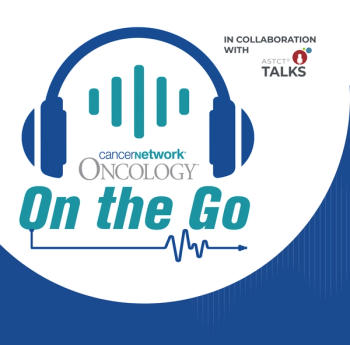
Oncology NEWS International
- Oncology NEWS International Vol 5 No 7
- Volume 5
- Issue 7
System Using Interactive Video Brings Oncology Services to Rural Kansans
ASCO--After more than a year of operating a teleoncology service, University of Kansas researchers have seen no discrepancies between consultations conducted via interactive video and subsequent on-site assessments. The University turned to teleoncology to better serve patients in sparsely settled areas of the state, Gary C. Doolittle, MD, co-director of the telemedicine service, said in his ASCO presentation in Philadelphia.
ASCO--After more than a year of operating a teleoncology service,University of Kansas researchers have seen no discrepancies betweenconsultations conducted via interactive video and subsequent on-siteassessments. The University turned to teleoncology to better servepatients in sparsely settled areas of the state, Gary C. Doolittle,MD, co-director of the telemedicine service, said in his ASCOpresentation in Philadelphia.
The first teleoncology practice was established as a collaborativeeffort between the University of Kansas Medical Center and theHays Medical Center, located 280 miles west of Kansas City. Hayshad lost its only oncologist when the telemedicine practice wasstarted. (An oncologist has since been recruited to the area.)
The practice includes twice weekly telemedicine clinics as wellas an outreach clinic in Hays to which Dr. Doolittle flies twicea month.
Patients are referred to the teleoncol-ogy service by a primarycare physician. Medical information, including radiology reportsfrom a local radiology group, are sent to Dr. Doolittle priorto the consult, and the actual x-rays or CT scans are transmittedover the system during the consult, with "adequate resolution,"he said.
The equipment includes a high-resolution color camera and twoTV monitors at each end, one showing the transmission from Haysand the other the transmission from the University.
A history is taken in the traditional way, and the physical examinationis conducted with a nurse practitioner serving as proxy examiner."I direct the physical and sometimes use our far-end cameracontrol to zoom in on a particular area of interest," Dr.Doolittle said. He also has available an electronic stethoscopethat enables him to auscultate heart and lung sounds over distances.
To date, Dr. Doolittle has seen 34 patients (for a total of 116patient visits) in the Hays Clinic, with ages ranging from 23to 96 years (average, 60). "In the beginning I was absolutelysure that the elderly population would not adapt to this new typeof health care delivery, but, in fact, the only two individualswho have declined to be seen on the system have been in their30s," he said.
Currently, Dr. Doolittle's services are not reimbured by Medicare,although he believes that this will be changed in the next year.Blue Cross/Blue Shield of Kansas does reimburse for telemedicineservices, as does Kansas Medicaid.
Dr. Doolittle said that his comfort level with the system hasincreased greatly over the past year of operation. He emphasized,however, that formal studies are needed to determine the clinicalefficacy, patient and physician satisfaction, and cost-effectivenessof the system.
Articles in this issue
over 29 years ago
Princess Diana Helps Raise Over $1 Million for Cancer Researchover 29 years ago
Study Gives Terminal Patients Option: $18,000 or More Treatmentover 29 years ago
Proven: Colorectal Screening Cuts Deaths 50%over 29 years ago
Virtual Colonoscopy Technique Feasible in Detecting Polypsover 29 years ago
Trimetrexate Appears Beneficial in Colorectal Cancerover 29 years ago
FDA Liaison Program Answers Patients' Questions About Trialsover 29 years ago
New Company Joins With RPR To Develop Intrabody Technologyover 29 years ago
More Insurers Covering ABMT, Despite Lack of Efficacy Dataover 29 years ago
CDC Says Teen Smoking Still RisingNewsletter
Stay up to date on recent advances in the multidisciplinary approach to cancer.




